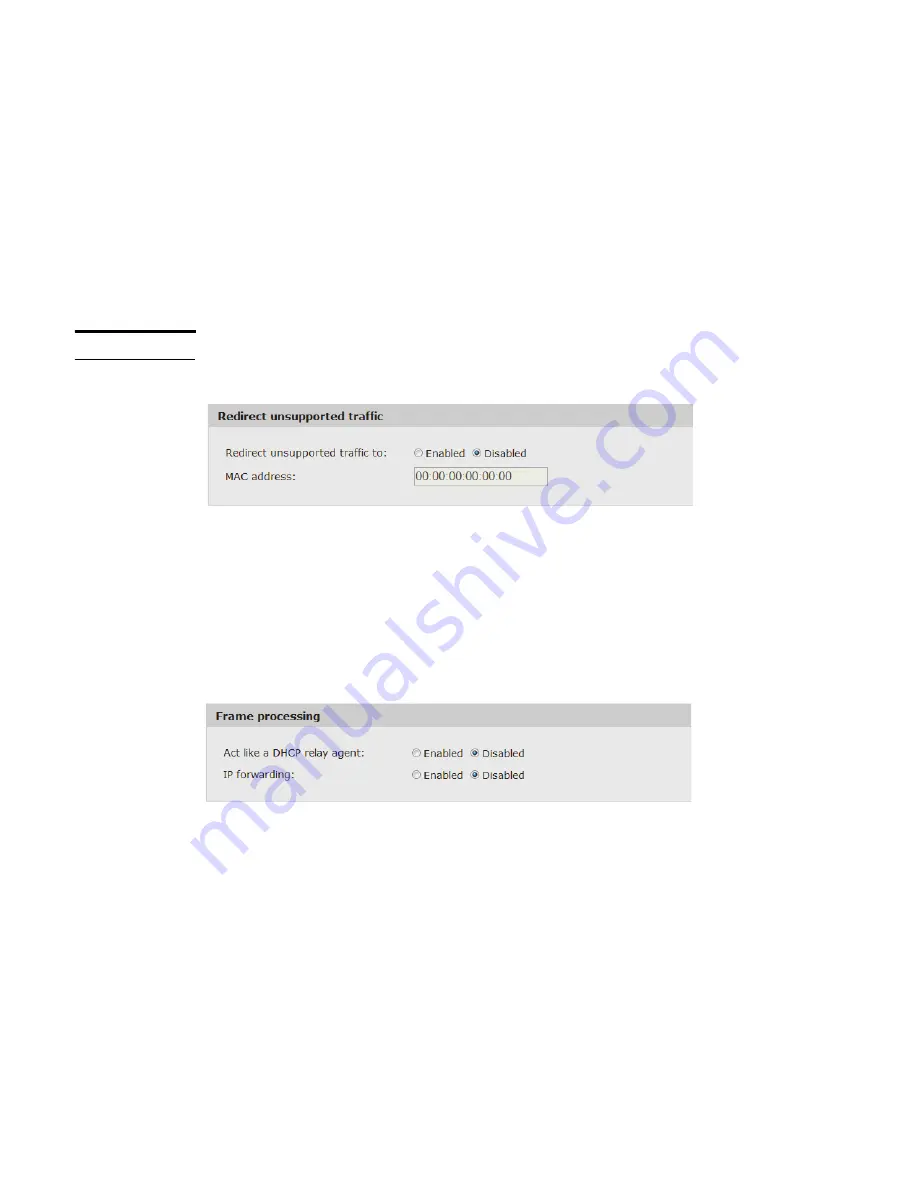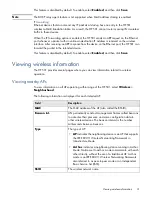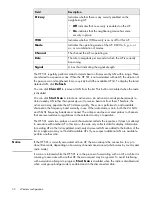
30
Wireless configuration
•
Management tool (TCP ports 80 and 443)
•
SNMP agent (UDP port 161)
•
Network time (UDP port 123)
Redirecting unsupported traffic
The HP 501 sends and receives only IPv4 traffic on the wireless link. By default, all other traffic
is unsupported and is dropped. In some cases, you might want to forward the unsupported
traffic to a wired device connected to the Ethernet port.
You can configure the HP 501 to redirect non-IPv4 traffic received on the wireless port to the
specified MAC address on the wired network.
Note
This feature cannot be used when MAC cloning is enabled.
To enable this feature, select
Wireless
>
Bridging
.
In the
Redirect unsupported traffic
section of the
Wireless bridging
page, select
Enabled
. Enter the
MAC address
of the station to forward non-IPv4 traffic to, and then click
Save
.
Configuring frame processing settings
The following settings can be configured in the Frame processing section of the
Wireless
bridging
page:
Act like a DHCP relay agent
A device connected to the Ethernet port can acquire its IP address from a DHCP server that is
accessed over the wireless network. DHCP requests from the device, and the replies from the
DHCP server, are handled by the upstream AP.
Some DHCP servers respond to DHCP requests using the MAC address of the requesting
station to identify the recipient. In this case, the upstream AP might not recognize the MAC
address, as it does not identify a device on the wireless network. The AP can then discard the
DHCP reply.
To avoid this problem, you can configure the HP 501 to modify all DHCP requests from the
Ethernet interface so that, when forwarded to the wireless network, they appear to come from a
DHCP relay agent. When enabled, the upstream AP sends DHCP replies from the server back
to the HP 501 for forwarding to the wired device.
Summary of Contents for Pavilion 501
Page 19: ...Setting the system time 19 ...
















































